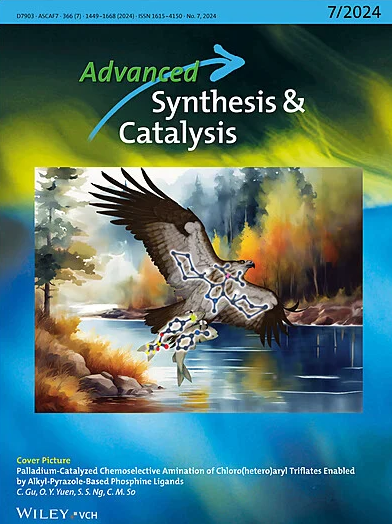Data-Driven Analysis of Ni-Catalyzed Semihydrogenations of Alkynes
IF 4.4
2区 化学
Q2 CHEMISTRY, APPLIED
引用次数: 0
Abstract
The semihydrogenation of alkynes to alkenes has historically been an essential technique in organic chemistry. In this context, researchers often employ transition metal complexes to achieve this conversion. Given the pronounced polarization of results, often yielding either very high or very low values, it remains challenging to discern the factors influencing reactivity and selectivity in many cases. In this work, we combine different sub-disciplines of digital chemistry with experimental outcomes to rationalize the results of a model Ni-catalyzed semihydrogenation that leads to E-alkenes. First, we analyze the main factors behind successful reactions using a machine learning classification model. The descriptors are computed directly from the SMILES strings of the reacting alkynes using an automated protocol that relies on structural features, molecular mechanics, and semi-empirical techniques. This workflow requires minimal human intervention and provides a fast yet useful approach. Next, we couple the same descriptors with activation barriers calculated with density functional theory, generating a regression model that explains reactivity based on the properties of the alkyne substrates. Overall, this study demonstrates the potential of using a combination of digital chemistry techniques to uncover reaction trends in Ni-catalyzed semihydrogenations of alkynes, an area where human intuition proves limited in application.求助全文
约1分钟内获得全文
求助全文
来源期刊

Advanced Synthesis & Catalysis
化学-应用化学
CiteScore
9.40
自引率
7.40%
发文量
447
审稿时长
1.8 months
期刊介绍:
Advanced Synthesis & Catalysis (ASC) is the leading primary journal in organic, organometallic, and applied chemistry.
The high impact of ASC can be attributed to the unique focus of the journal, which publishes exciting new results from academic and industrial labs on efficient, practical, and environmentally friendly organic synthesis. While homogeneous, heterogeneous, organic, and enzyme catalysis are key technologies to achieve green synthesis, significant contributions to the same goal by synthesis design, reaction techniques, flow chemistry, and continuous processing, multiphase catalysis, green solvents, catalyst immobilization, and recycling, separation science, and process development are also featured in ASC. The Aims and Scope can be found in the Notice to Authors or on the first page of the table of contents in every issue.
 求助内容:
求助内容: 应助结果提醒方式:
应助结果提醒方式:


